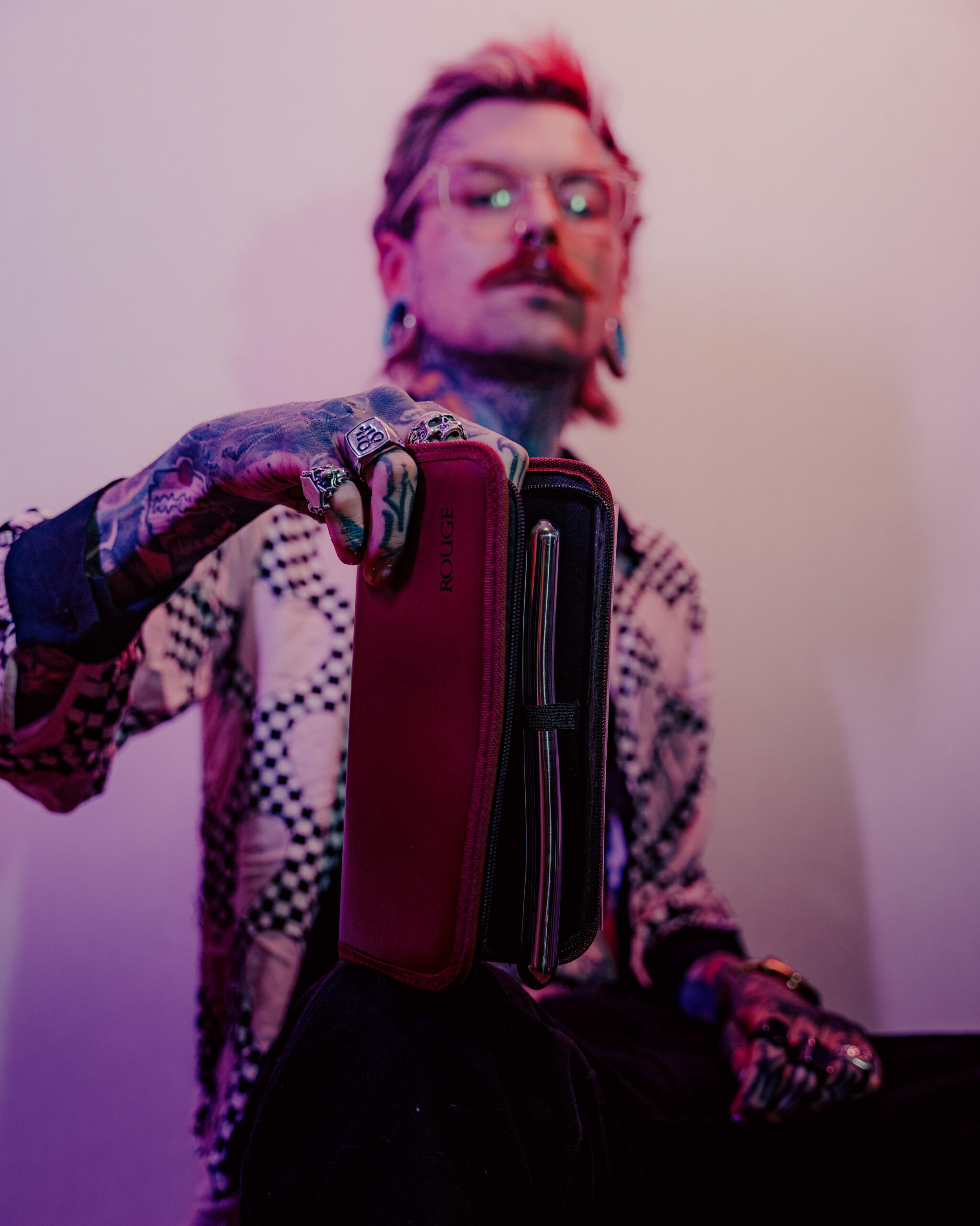Pansexuality: Understanding Attraction That Transcends Gender Boundaries
May 26, 2025
Defining Pansexuality
Pansexuality is a sexual orientation characterized by romantic, emotional, and/or sexual attraction to people regardless of their gender identity or expression.
It’s an umbrella term that encompasses attraction to all genders, including men, women, transgender individuals, non-binary individuals, and anyone else who falls outside the traditional binary of male and female.
For pansexual individuals, gender is not a determining factor in their attraction. They find people attractive based on individual qualities, personality traits, and connections rather than solely on their assigned sex at birth or how they present themselves.
The term “pansexuality” originates from the Greek words “pan,” meaning all, and “sexus,” meaning sex. This etymology reflects the core principle of pansexuality: attraction to all sexes.
It’s important to distinguish pansexuality from bisexuality, which typically refers to attraction to two genders—often men and women.
While there is overlap between the two orientations, pansexuality emphasizes an openness to attraction regardless of gender categories.
Understanding pansexuality requires acknowledging that gender is a complex and multifaceted spectrum rather than a binary concept.
Many pansexual individuals identify as part of the broader LGBTQIA+ community, recognizing shared experiences of navigating societal expectations and prejudices surrounding gender identity and sexual orientation.
The understanding and acceptance of pansexuality are evolving as societal views on gender and sexuality continue to broaden.
By promoting education and open dialogue, we can create a more inclusive environment where individuals can express their identities authentically without fear of judgment or discrimination.
Pansexuality is a sexual orientation characterized by romantic, sexual, and/or emotional attraction to people regardless of their gender identity or expression.
At its core, pansexuality encompasses attraction to all genders: male, female, non-binary, transgender, agender, and any other gender identity. This means that a pansexual person might be attracted to individuals who identify as men, women, both, neither, or something else entirely.
It’s important to distinguish pansexuality from bisexuality. While both orientations involve attraction to more than one gender, pansexuality emphasizes attraction to all genders, while bisexuality typically refers to attraction to two genders: usually male and female.
The term “pansexual” originates from the Greek words “pan,” meaning “all,” and “sexual.” This directly reflects the core concept of attraction to all sexualities.
For pansexual individuals, gender is not a determining factor in their attraction. They may be drawn to someone’s personality, sense of humor, intelligence, or other qualities, regardless of their gender identity.
It’s crucial to remember that everyone experiences and expresses their sexuality differently. Pansexuality is a spectrum, and individuals within this community may have varying degrees of attraction to different genders.
Understanding pansexuality requires acknowledging and respecting the diversity of human experience and embracing the fluidity of gender identity.
Pansexuality is a sexual orientation characterized by romantic, emotional, and/or sexual attraction to people regardless of their **gender identity** or **gender expression**.
The term “pansexual” comes from the Greek words “pan,” meaning “all,” and “sexual.” It emphasizes that pansexual individuals are attracted to a wide spectrum of genders, including men, women, transgender people, non-binary people, and everyone in between.
Understanding pansexuality requires debunking common myths and misconceptions:
-
Myth: Pansexuality is just another word for bisexuality.
-
Myth: Pansexual people are attracted to everyone.
-
Myth: Pansexuality is a phase or trend.
While there are overlaps in the experiences of bisexual and pansexual people, they are distinct orientations.
Bisexuality typically refers to attraction to two genders, most often men and women. Pansexuality encompasses attraction to all genders, acknowledging that gender is a spectrum, not a binary.
Like anyone else, pansexual individuals have preferences and may find themselves more attracted to some people than others. Attraction is complex and multifaceted.
Sexual orientation is a fundamental aspect of a person’s identity and is not temporary or superficial.
It’s essential to remember that pansexual individuals are diverse, just like any other group of people. Their experiences, expressions, and relationships vary widely.
Respecting pansexuality means:
-
Using accurate language:
-
Listening and learning:
-
Challenging stereotypes:
Avoid using outdated or offensive terms. “Pansexual” is the preferred term.
Be open to hearing from pansexual individuals about their experiences and perspectives.
Speak up against misinformation and prejudice whenever you encounter it.
Creating a more inclusive society requires understanding, empathy, and respect for all sexual orientations.
Experiences of Pansexual Individuals
Pansexuality is an orientation characterized by attraction to people regardless of their gender identity or expression. It’s a spectrum, meaning experiences can vary greatly from person to person.
For some, pansexuality feels like a natural and straightforward part of who they are. They’ve always been attracted to people of all genders, without feeling any particular preference for one over another.
Others may have gone through a journey of self-discovery, realizing their attraction transcends traditional gender norms. This might involve questioning previous assumptions about sexuality, exploring different identities, and ultimately coming to terms with their pansexual identity.
Coming out as pansexual can be a deeply personal experience, influenced by factors like societal acceptance, family support, and individual comfort levels. Some individuals choose to openly embrace their pansexuality, finding community and validation within the LGBTQ+ community. Others may prefer to keep their identity private for fear of stigma or discrimination.
Dating and relationships as a pansexual person can be both rewarding and challenging. Navigating societal expectations and misconceptions can sometimes require patience and understanding. Finding partners who are open-minded, respectful, and willing to learn about pansexuality is crucial.
Language and terminology play a significant role in shaping the experiences of pansexual individuals. Using respectful and accurate language, such as “pansexual” instead of outdated or offensive terms, can contribute to a more inclusive and understanding environment.
Ultimately, the experiences of pansexual individuals are diverse and multifaceted, shaped by personal journeys, societal influences, and individual choices. It’s important to remember that every person’s experience is unique and valid.
Pansexuality, a sexual orientation characterized by attraction to people regardless of their gender identity or expression, offers a unique perspective on love, relationships, and self-discovery.
Individuals who identify as pansexual often describe their experiences as encompassing a wide spectrum of human connection.
They may feel drawn to people based on personality, shared values, emotional compatibility, or simply a sense of mutual understanding, transcending the limitations of traditional gender categories.
For some pansexual individuals, experiencing attraction to multiple genders from an early age has been a natural part of their identity development.
Others may have discovered their pansexuality later in life, through personal exploration and self-reflection.
The journey of coming to terms with one’s pansexuality can be both liberating and challenging.
It often involves navigating societal norms that are steeped in binary understandings of gender and sexuality.

Here are some common challenges faced by pansexual individuals:
-
Lack of Understanding and Acceptance:
-
Misconceptions and Stereotypes:
-
Internalized Homophobia and Biphobia:
-
Difficulty Finding Representation and Community:
Despite these challenges, the pansexual community is growing and finding ways to celebrate its diversity and resilience.
Increased visibility through media representation, activism, and online platforms has helped to raise awareness and understanding of pansexuality.
More and more people are embracing their pansexuality as a valid and beautiful part of who they are.
Acceptance of pansexuality starts with education and empathy:
-
Learning about different sexual orientations and gender identities.
-
Challenging stereotypes and biases.
-
Creating inclusive environments where everyone feels safe to express themselves authentically.
By fostering acceptance and understanding, we can create a more equitable world where pansexual individuals, like all people, can live openly and authentically.
Pansexuality is an identity marked by a deep capacity for love and attraction that extends beyond traditional gender boundaries.
Individuals who identify as pansexual are attracted to people regardless of their gender identity or expression.
This means they might be drawn to men, women, transgender individuals, non-binary individuals, and everyone in between.
The core principle of pansexuality is the belief that attraction is not limited by societal norms or expectations surrounding gender.
It’s about celebrating the diversity of human experience and recognizing the inherent value in every individual, regardless of their gender.
For many pansexual people, their experiences are characterized by a profound sense of freedom and liberation.
They embrace the fluidity of attraction and don’t feel confined by rigid definitions or labels.
Pansexuality allows them to explore relationships with authenticity and openness.
However, navigating the world as a pansexual individual can also come with unique challenges.
Societal misconceptions and prejudices often lead to misunderstanding and discrimination.
Some people may struggle to comprehend the concept of pansexuality, leading to confusion or even hostility.
This can make it difficult for pansexual individuals to feel accepted and understood in their communities.

Furthermore, the pressure to conform to societal norms regarding sexuality can be overwhelming.
Pansexual individuals may face internal conflict as they grapple with their identity and how to express it authentically.
Despite these challenges, many pansexual people find strength and support within diverse communities.
Online platforms and local organizations provide spaces for connection, understanding, and advocacy.
Sharing experiences, stories, and resources helps to build solidarity and empower individuals to live openly and proudly as their authentic selves.
The journey of embracing pansexuality is a testament to the beauty of human diversity and the importance of challenging societal norms.
It’s about celebrating the spectrum of human experience and fostering a world where everyone feels safe, accepted, and loved for who they truly are.
Pansexuality in Society
Pansexuality is a sexual orientation characterized by romantic or sexual attraction to people regardless of their gender identity or expression.
Unlike bisexuality, which often refers specifically to attraction to two genders (typically men and women), pansexuality encompasses attraction to all genders, including transgender, non-binary, and genderfluid individuals.
The term “pan” originates from the Greek word “pan,” meaning “all.”
Pansexual individuals may find themselves attracted to people across the entire gender spectrum, and their attraction is not limited by traditional gender norms.
Understanding pansexuality involves recognizing that gender identity and sexual orientation are distinct concepts.
Gender identity refers to an individual’s internal sense of their own gender, while sexual orientation describes who a person is attracted to.
Representation of pansexuality in society has evolved significantly over time, but still faces challenges.
Historically, pansexuality was often overlooked or misunderstood, and individuals identifying as pansexual may have faced societal stigma and prejudice.
Increasing visibility and acceptance of diverse sexual orientations have led to greater awareness and understanding of pansexuality in recent years.
However, there is still a need for more inclusive representation of pansexual individuals in various aspects of society, including media, education, and healthcare.
Media representation plays a crucial role in shaping societal perceptions and understandings of different sexual orientations.

Positive and authentic portrayals of pansexual characters in film, television, literature, and other media can contribute to greater visibility, acceptance, and understanding.
Conversely, inaccurate or stereotypical representations can reinforce harmful biases and misconceptions.
It is important for media creators to engage with pansexual communities and ensure that their portrayals are accurate, respectful, and representative of the diverse experiences within the pansexual community.
Accurate and nuanced representations in media can clit clip help break down stereotypes, foster empathy, and promote greater inclusivity.
Pansexuality, often described as attraction to all genders, is a sexual orientation that embraces diversity and challenges traditional notions of gender and attraction.
Understanding pansexuality involves recognizing that it is more than simply “attraction to everyone.” It encompasses a spectrum of experiences and identities, where individuals may be attracted to people regardless of their gender identity or expression.
Pansexual individuals may experience romantic, sexual, or emotional attraction to people who identify as male, female, transgender, non-binary, genderfluid, or any other gender identity.
It’s essential to understand that pansexuality is not synonymous with bisexuality, although there are some overlaps.
Bisexuality generally refers to attraction to two genders (typically male and female), while pansexuality encompasses a wider range of gender identities.
Pansexuality in Society
While societal understanding of sexual orientations is evolving, pansexual individuals may still face challenges and misconceptions:
-
Invisibility and Misrepresentation: Pansexuality is often overlooked or misrepresented in media and popular culture, leading to a lack of visibility and understanding.
-
Assumptions and Stereotypes: Pansexual individuals may encounter assumptions about their experiences based on limited knowledge or stereotypes.
-
Internalized Homophobia/Biphobia: Some pansexual individuals may internalize societal prejudices, leading to feelings of shame or questioning their identity.
Legal Recognition and Rights
Legal recognition and protection of pansexual individuals vary significantly across the globe:
-
Some countries have legalized same-sex marriage and implemented anti-discrimination laws that protect individuals based on sexual orientation, including pansexuality.
-
In other regions, pansexual individuals may face legal challenges or lack comprehensive protections against discrimination in areas such as employment, housing, and healthcare.
Advocacy groups and human rights organizations continue to work towards achieving full legal recognition and equality for pansexual individuals worldwide.
It’s crucial to create inclusive environments where pansexual identities are affirmed and respected. Education, open dialogue, and challenging stereotypes are essential steps toward fostering understanding and acceptance of pansexuality in society.
Pansexuality is an umbrella term describing romantic, sexual, or emotional attraction to people regardless of their gender identity or expression. It encompasses attraction to all genders, including men, women, transgender, non-binary, and genderfluid individuals.
Historically, pansexuality has been a fluid and evolving concept, sometimes overlapping with bisexuality. In recent years, however, it has gained recognition as a distinct identity, emphasizing attraction across the entire spectrum of genders rather than solely male and female.
In society, pansexual individuals face unique challenges and experiences. Like all LGBTQ+ individuals, they may encounter prejudice, discrimination, and lack of understanding from family, friends, or society at large.
Misconceptions about pansexuality are prevalent, often rooted in a misunderstanding of its definition and inclusivity. Some people confuse it with bisexuality, assuming it’s simply attraction to two genders. Others may use it dismissively or as a synonym for promiscuity.
These misconceptions contribute to stigma and make it difficult for pansexual individuals to feel comfortable expressing their identities openly. They can lead to internalized homophobia and transphobia, where individuals question their own sexuality or gender identity due to societal pressure.
Advocacy and education are crucial in combating these issues. Visibility is key: featuring pansexual role models in media, literature, and popular culture helps normalize the identity and combat stereotypes.
Open and honest conversations about pansexuality within families, schools, and communities can foster understanding and acceptance. Educational resources that accurately define and explain pansexuality are essential for dispelling misconceptions and promoting inclusivity.
Legal protections for LGBTQ+ individuals, including those who identify as pansexual, are also vital in ensuring their safety and equality. Anti-discrimination laws, marriage equality, and access to healthcare are all crucial for creating a society where pansexual people can thrive without fear or prejudice.
Read what’s fully explained
Catch all the key points
- Safely Incorporating CBD Infused Gummy Edibles Into Your Diet - November 14, 2025
- Retinol Peel Near Lyne And Botleys, Surrey - November 11, 2025
- Retinol Peel Near Banstead, Surrey - November 10, 2025
